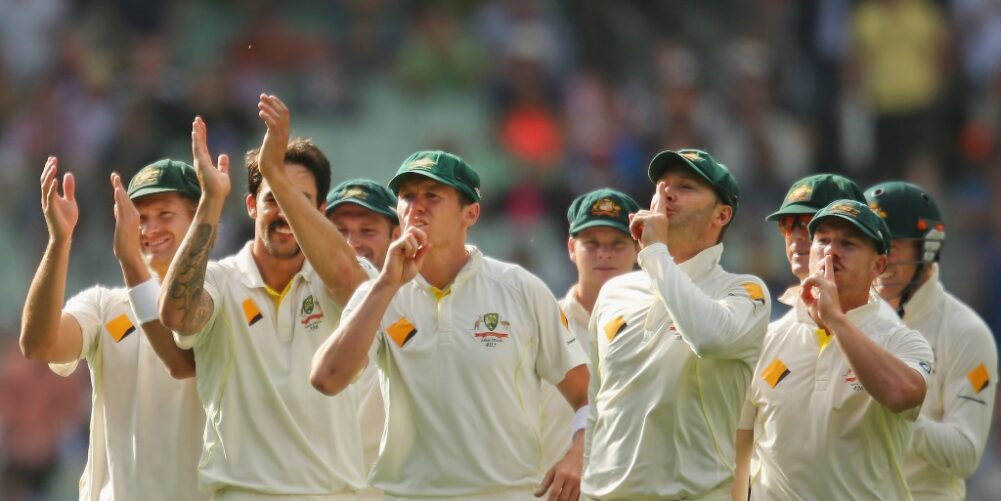(Photo: Getty Images)
By Tim Wigmore
Dashed dreams are all too familiar to anyone who has followed cricket politics and the International Cricket Council’s plans to reform the sport.
There was the plan to create a Test league in 2004. It failed. There was a plan to create a Test league in 2008. It, too, failed. There was the plan to create a World Test Championship in 2013 and then, when that was postponed, 2017. It failed.
And there was last year’s plan to introduce two divisions, of seven and five, in Test cricket. Yep, that one failed, too.
So the overwhelming reaction to last week’s news that a Test league of nine nations would be introduced from 2019 is one of surprise. Finally, administrators have translated debate into tangible action.
And, yes, the plans are flawed. It doesn’t adhere to the basic concept of fairness in sports league: everyone playing everyone else. Instead, because of a combination of India’s unwillingness to play Pakistan and the overcrowded schedule, the nine teams will only play six series – three at home and three away – over two years before the winners meet in the final.
The Test league is likely to allow one-Test series, so that a solitary Test victory will bring the same number of total points as someone winning the Ashes series 5-0.
Afghanistan and Ireland, elevated to Test status in June, have effectively been demoted to the ‘small three’, with Zimbabwe, before even playing their first Test. They will essentially play among themselves, with a couple of Test friendlies a year against top-tier sides.
But a flawed plan is still infinitely preferable to bumbling along, even as Test cricket’s challenges – both from other formats of the game and completely different sports – intensify.
The structure will mean Test cricket is no longer unique among international sports in having no league, and no overall champion. A two-year cycle is also very long – too long, some broadcasting insiders believe – but it’s better than no league at all. In England, Test cricket lovers have always been indulged by copious Tests and multi-match series, the sort that make it easy to convince yourself that Test cricket doesn’t really have any problem at all.
But English fans being spoiled shouldn’t obscure how other countries have too little to play for, making Tests a hard sell to players and fans alike.
Consider New Zealand. From 2013-15, they went seven series undefeated, including toppling India at home and sharing a thrilling two-Test series in England in 2015. Mike Hesson, New Zealand’s coach, said his side had “earned the right” to play longer Test series.

Of course, that’s not how it works in international cricket, where fixtures are determined by a mixture of financial greed, which is why Australia, England and India stage so many games against each other, and political alliances, which is why India play Sri Lanka, a reliable ally in the ICC, so often. It is an appalling way to run a sport.
Under the new system, that probably won’t change much: the length of series will be left up to boards themselves, so could be anything from one Test to five. But at least all countries will have something to aim for after two years.
For a country like New Zealand, who do not have a marquee Test series (they would claim it is against Australia, yet the last trans-Tasman series was only two Tests, which hardly suggests Australia feel the same way), there will be an overarching goal at last.
That 2013-15 team, under Brendon McCullum, could well have reached the Test final, which would have been a historic achievement, the sort that could fleetingly bring Test matches in the country from niche pursuit to front-page news.
The answer to international sport’s most basic question – “who’s the best?” – will finally have an easy answer: the world Test champions. Even more importantly, it should encourage more people to watch. If South Africa, say, needed to beat Sri Lanka 2-0 to reach the Test play-off, the series would have far more relevance, and chance of engaging the wider public, than it ever would now.
And, because matches involving other countries will now impact whether their team can reach the Test play-off, it will encourage fans to watch games involving other sides, just as Premier League football fans do.
So, yes, the new structure is far from perfect. Yet at least it amounts to partial recognition of Test cricket’s problems. If the sport’s structure until this week was worth a mark of 1/10 – really, of course, there was no structure at all – now it has probably been elevated to 4/10.
That’s progress of sorts. But Test cricket needs much broader reform – above all, equality in fixtures and finances, to ensure that it’s in the financial interests of all the best players to play, rather than merely those from the Big Three – to sustain the game.
What happened this week is welcome, but it is not enough.












